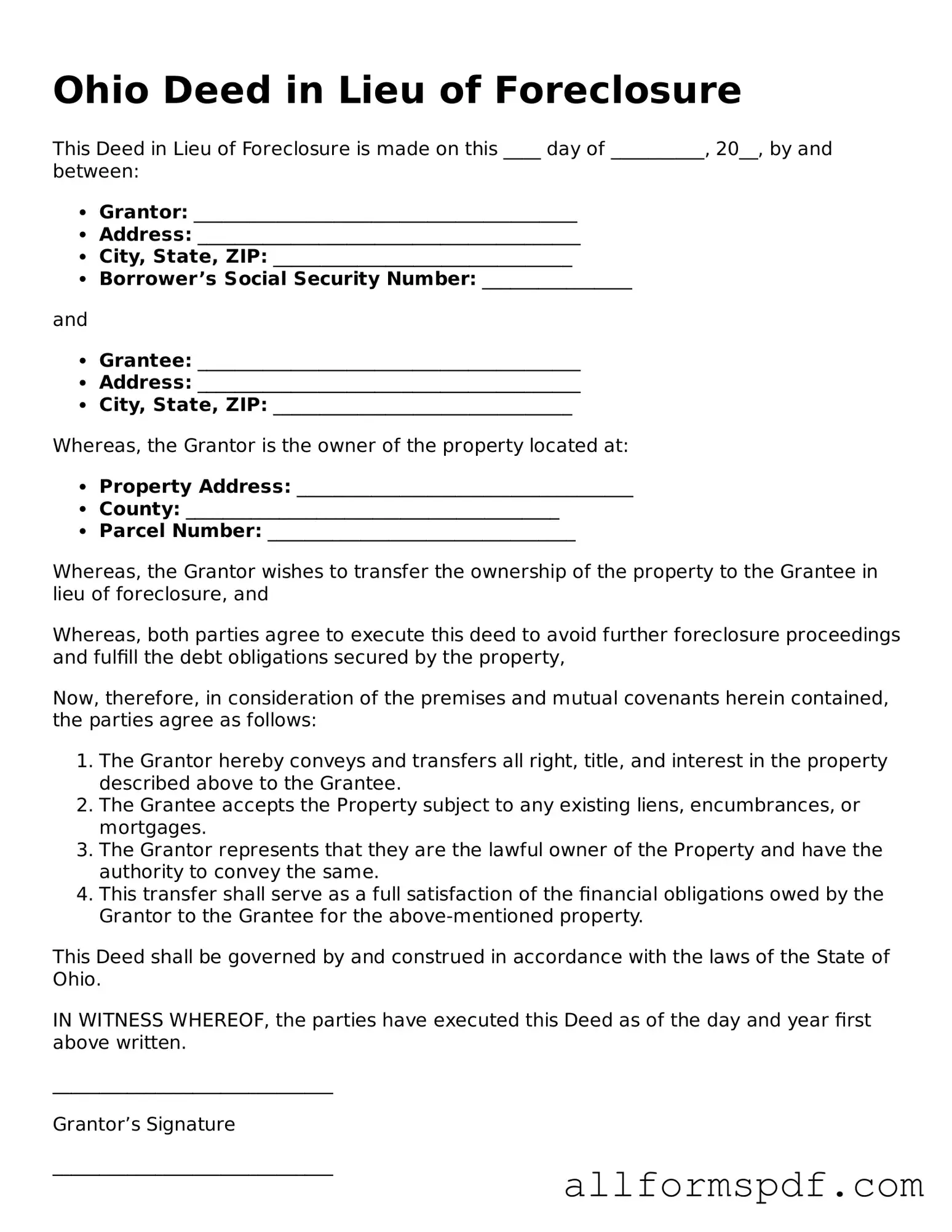Filling out the Ohio Deed in Lieu of Foreclosure form can be a complex process, and mistakes can lead to delays or complications. One common mistake is not including all necessary parties. When multiple individuals are involved in the property, all owners must sign the form. Omitting someone can invalidate the deed.
Another frequent error is failing to provide accurate property information. This includes the legal description of the property. An incomplete or incorrect description can create confusion and may result in the deed being rejected.
People often overlook the requirement for notarization. The deed must be signed in front of a notary public. Without this crucial step, the document may not be legally binding, which can cause significant issues down the line.
Some individuals forget to check for any outstanding liens on the property. If there are existing liens, the deed in lieu may not be accepted. It’s essential to resolve these issues before proceeding with the form.
Another mistake involves not understanding the implications of signing the deed. Some people may not realize that by signing, they are giving up their rights to the property. It's important to fully understand what this means before moving forward.
Additionally, failing to communicate with the lender can lead to problems. It’s crucial to inform the lender of the intention to execute a deed in lieu. Clear communication can help avoid misunderstandings and ensure a smoother process.
People sometimes neglect to provide a valid reason for the deed in lieu. Lenders often require an explanation for why the borrower is unable to continue making payments. Providing this context can help facilitate the process.
In some cases, individuals do not keep copies of the completed form. It's important to retain a copy for personal records. This can serve as proof of the transaction and may be needed for future reference.
Another mistake is not considering tax implications. A deed in lieu of foreclosure can have tax consequences. Consulting with a tax professional before signing can help avoid unexpected financial burdens.
Finally, many fail to seek legal advice. Navigating the complexities of a deed in lieu can be daunting. Consulting with a legal expert can provide clarity and ensure that all aspects of the process are handled correctly.
